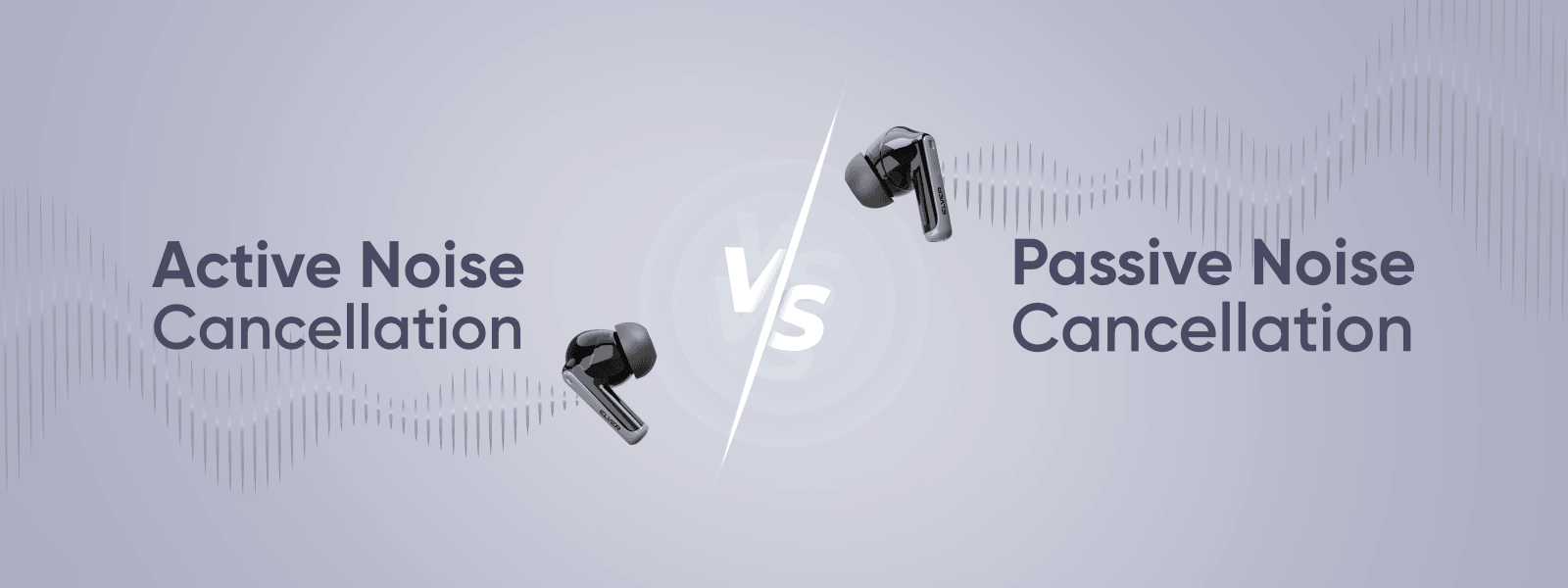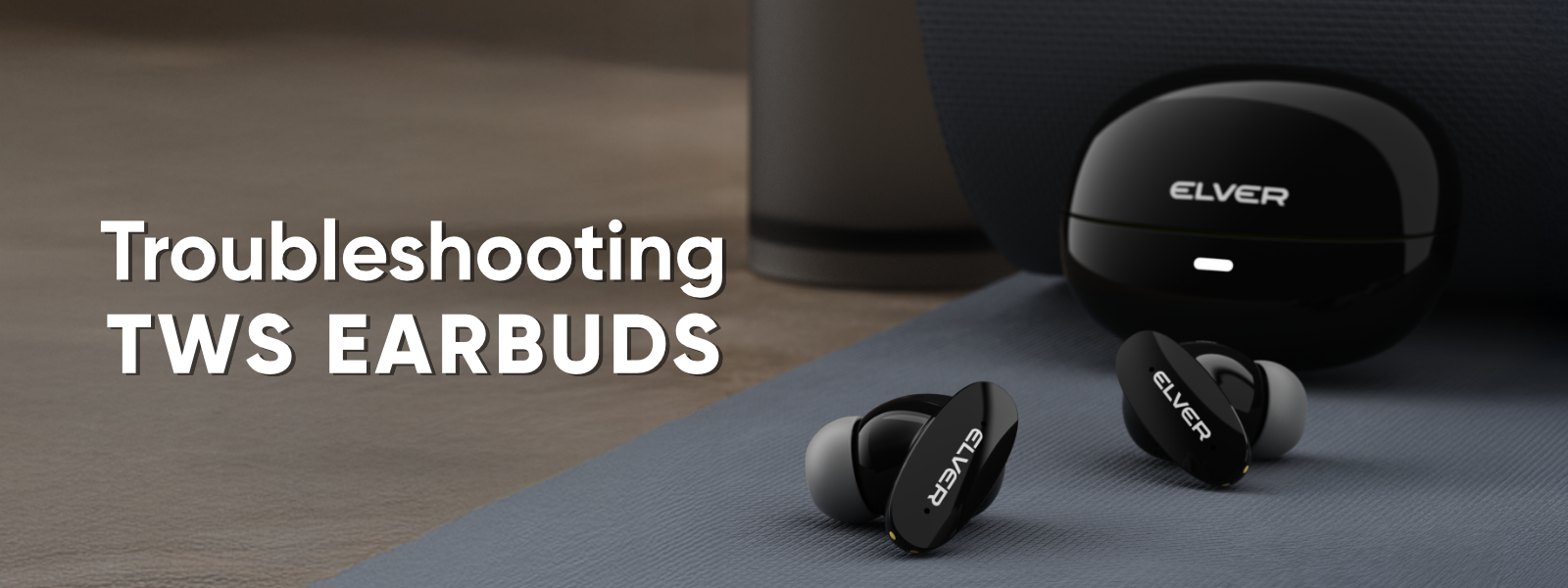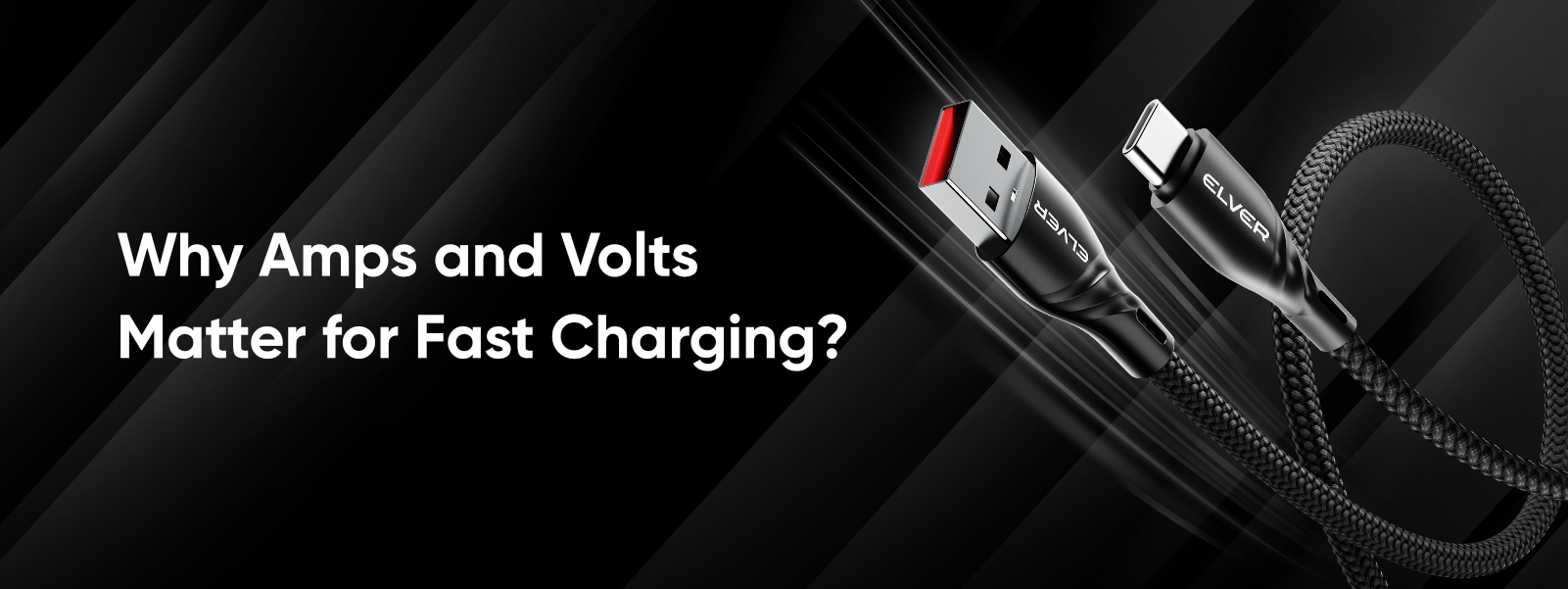Noise cancelling is one of the features that’s in high demand when it comes to headphone and earbud buyers. Enjoying music while travelling or working, audible sounds from the surroundings can often be an unwanted distraction, so having an option to cancel those sounds is satisfactory. However, did you ever think there are two noise cancellation types? In the later sections, this blog shall extensively cover the two technologies in active noise cancelling vs passive noise cancelling and offer a comprehensive guide on choosing one of the two.
Understanding Passive Noise Cancellation
However, before we set out to compare active noise cancelling vs passive noise cancelling, it is best to first comprehend what each of these terms means. As the name suggests, Active noise cancelling [ANC] uses microphones or built-in electronic chip circuitry in the headphones or tws earbuds. The device listens to or ‘hears’ sounds in the environment and generates an opposite signal which cancels the unwanted sound out.
Although passive noise cancelling may help block out some background noise, the overall amount that can be effectively blocked out has a high reliance on how secure the earbuds or headphones are in someone’s ears. A proper fit may isolate most of the external noise, but this is not enough in cases with ANC where active noise can effectively suppress audible sound in relatively louder environments.
Active Noise Cancellation: The Technology Behind It
At the same time, active noise cancelling can achieve a unique degree of sound isolation – a level-up. Active noise control (ANC) always features built-in microphones which perform the function of measuring noise within one’s surrounding environments, be it a gregarious discourse or a drone or aircraft engine. As soon as such noise has registered a headphone or an earbud will emit sound which is inversely correlated (i.e. in anti-phase) to the noise signal and out-muffles it successfully.
This technology is instant and self-managing because it continuously senses the environment around the user. Comparing noise cancelling active vs passive provides no doubts: active noise can cope with more or less any kind of noise level because that is the specific situation.
Which One Is Right for You: Active or Passive?
You may prefer active noise cancellation or passive noise cancelling thus its essential to evaluate your daily activities. If you wanna keep it simple and do not want to use any batteries or charge your device, passive noise cancellation might be the best option for you. It's also an attractive alternative for people seeking a simple device that is easy to use while still hearing excellent sound.
Active noise cancelling devices may be for those who live in loud places and feel the need to cut out excessive noise while passive may not work well for you. It is easy to understand why active noise cancellation is best in instances where background noise is continuous, or even when on the move and travelling in noisy environments.
A Comparison: Noise Cancelling Active vs Passive
When looking at how noise cancelling active vs passive work, both seem to have their benefits. However, excessive and unremitting sounds will present a challenge. While a passive noise cancellation system works quite decently, when the strong and continuous sounds become overwhelming, they become less effective at providing good sound quality or clarity. Overriding constructs with sound cancellation is what active noise on the other hand does best.
Conclusion
In any case, in the dispute of active noise cancellation vs passive noise cancellation, both sound effective and efficient and have their own purpose. Passive noise cancellation is ideal for those who prefer to block external sounds without any elaborate techniques. But if the purpose is to achieve superior sound isolation, specifically in a noisy area, active noise cancellation comes on top. In this regard, the Elver Buds X True Wireless Earbuds and Elver Buds U True Wireless Earbuds are excellent options as they have great ANC features that enhance how the wearer listens to music, and podcasts, or even attends to phone calls without any unnecessary disturbances.









